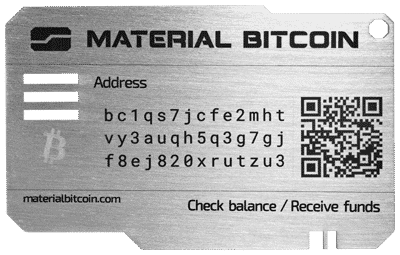Looking to achieve financial independence is a goal that we all aim for. Imagine having the financial resources to do what you want, without the burden of needing to work for a living.
It’s a dream that many of us share and work hard to reach. But, with rising living costs and economic uncertainties ahead due to global issues, it’s hard to predict the future.
This makes investing and planning ahead that much more important.
In this post, we will review the 5 best ways to achieve financial independence.
We will go over what it means to be financially independent, review some key tips by influential finance specialists, and give you some pointers for achieving future success.
What is Financial Independence?
Explained in basic terms, financial independence means having enough money and wealth to live comfortably without the necessity to work for a living. Your income can be generated from investments, savings, and other passive income solutions.
The main advantage and goal of financial independence is being able to enjoy your life without the need to work. Aiming to give you the free time to pursue your hobbies and passion projects.
The “FIRE” movement (Financial Independence, Retire Early), is a concept where you save and invest aggressively to reach financial freedom as quickly as possible. Your income streams can come from investments, like stocks, ETFs, bonds, crypto, and real estate.
Steps to Help You Achieve Financial Independence
Before getting started on planning and investing, we suggest breaking down the necessary steps to make becoming financially free an achievable goal.
It might seem like a long shot, but there are plenty of professional finance experts and average joes who have done it and can help guide you along the way.
Step One
The first step is reviewing your current situation. You need to go over your income, expenses, assets, and any liabilities.
It seems obvious to many, but you’d be surprised to know that only 42% of Americans know their budget and track their spending.
While a majority of Americans admit to spending more than they earn. This can be due to a lack of knowledge about their budgets and/or a result of high inflation.
Having the tools and know-how to protect your savings from inflation is another key point in investment strategies.
Step Two
Next, you must set clear goals. These need to be specific objectives that are measurable and achievable to your financial situation. These goals can be to pay off debt and loans and to plan for retirement.
Once you have your goals aligned, you need to create your strategy.
Step Three
This financial plan needs to outline your income, expenses, and saving targets, along with strategies for repaying loans and saving for your future retirement. Currently, only 28% of American workers feel confident that they will have enough money to retire comfortably. If you want real financial freedom, you need to work against popular belief to implement these objectives.
Make sure to continuously review your risk tolerances and adjust your plan to fit into your life.
Working with a financial planner is a great start, but if you can’t afford professional help there are plenty of books and online resources that can help you to get started.
We suggest starting with some classics, like Robert Kiyosaki‘s “Rich Dad Poor Dad”. It outlines the importance of financial education from childhood. And, “Freedom: A Proven Path to All the Money You Will Ever Need” by Grant Sabatier, which provides a basic roadmap to the financial world.

5 Ways to Achieve Financial Independence
To help you on your way, we have put together a list of the 5 best ways to achieve financial independence. There are multiple ways of achieving this goal, each one tailored specially to a unique set of objectives and circumstances.
Here are five effective strategies that we think will help you reach financial freedom:
1. Increase Your Income
Seems like an obvious first step, but increasing your income might not be so easy.
It is a fundamental step towards achieving financial independence, therefore finding ways to raise your salary or produce other streams of income is vital.
Some effective strategies include investing, negotiating raises and promotions at work, learning a new skill, and starting a side hustle or taking up an additional part-time job.
In “Rich Dad Poor Dad,” Robert Kiyosaki highlights the importance of creating multiple streams of income. His main point is that relying on one income stream can limit your financial growth.
Just like you would want to diversify your investment portfolio, you also want to diversify your income sources.
2. Save and Invest Wisely
Once new streams of income start coming in, it might seem tempting to spend it, but saving a significant portion of your income is crucial.
This is what will build your wealth and help you get closer to achieving financial independence.
Consistently setting aside money and investing in opportunities that grow your wealth is a crucial step in the process.
There are many different investment options to consider, including stocks, bonds, real estate, and cryptocurrencies.
The book “The Psychology of Money” by Morgan Housel, emphasizes that successful investing isn’t so much about technical “know-how” but more about checking your emotions and making informed decisions.
You need to save and invest money to make it grow.
3. Reduce Your Expenses
Cutting down unnecessary expenses is key.
Try cooking at home, shopping for deals, and cutting out anything unused or not vital.
Being frugal might be uncomfortable, but you need to approach this step as a temporary necessity that helps you save more, to then create more wealth.
4. Invest in Crypto
Cryptocurrencies have become a lucrative investment option as Bitcoin has proven significant long-term growth.
Just within the last decade, it has grown from a value of $1 to over $30,000. Investing in crypto can be rewarding, especially if you are taking a long-term HODL approach, but you need to prioritize security when doing so.
Using a reliable crypto wallet for long-term hold, like Material Bitcoin ensures that your digital assets are securely stored offline, protecting your BTC from hacking attempts.
The long-term potential of investing in cryptocurrencies continues to gain popularity, and many global institutions are adopting blockchain technology.
It’s a valued investment to add to your portfolio as long as you maintain its safety in a trusted hardware wallet.

5. Continue to Educate Yourself
Staying informed about financial trends is key to gaining financial independence.
Assess your goals and objectives annually, and check in on profits and budgets. Adjust how much you can save and invest, and outline your short-term goals to make sure to stay on track for your long-term goals.
There are plenty of online resources like blog posts, and podcasts that you can review for free.
You can also sign up for courses or hire professional financial services if you think the benefit is worth it. When it comes to your investments, make sure to stay on top of new regulations, for example with crypto and claiming taxes.
How Much Money Do I Need to Be Financially Independent?
Calculating the amount of money you will need for financial independence can be done by using two popular methods.
The 25x rule states that we should aim to save 25 times our annual expenses to be financially independent. For example, if your annual expenses are $40,000, you would need $1,000,000.
It’s important to understand that this method assumes that you can safely withdraw from your savings without running out of money or going into debt.
On the other hand, the 4% rule applies to retirees and is about how much you can withdraw from your investments yearly without running out of your savings. This is based on data that suggests that 4% of withdrawals can be sustainable.
How Can I Tell If I’m Financially Independent?
To determine if you are financially independent, ask yourself the following questions:
➡️ Do I have a sufficient income? Are my earnings from my investments, rental properties, or other passive sources enough to cover my expenses without the need to work?
➡️ What about my debts? Is my credit minimal or fully paid off?
➡️ Are my savings substantial enough to carry me through retirement? Have I saved 25 times my annual expenses, and do I have an emergency fund set aside?
If you can answer yes to these questions, you are likely financially independent.
CONGRATS!
Become Free
Financial independence involves reviewing your current financial status, setting clear goals, creating a plan, learning about the economy and finance, saving and investing wisely, and reducing your expenses.
Investing in assets, including cryptocurrencies secured with reliable hardware wallets like Material Bitcoin, can significantly contribute to reaching your goals. Educating yourself and keeping up to date on current markets will aid you in taking control of your financial future.
FAQs
How long does it typically take to achieve financial independence?
- The timeline can vary depending on your circumstances, like income, savings rate, and investment returns.
What role does investing play in achieving financial independence?
- Investing is crucial for growing our wealth. By investing in stocks, bonds, real estate, and cryptocurrencies, you can generate returns that beat inflation and help you build substantial wealth.
Are there specific financial habits or practices that can expedite the journey to financial independence?
- Habitually saving portions of income, minimizing debt, living below your means, and continuously educating yourself about financial trends can help expedite financial independence.
Is financial independence possible while in debt?
- It’s challenging but possible, so try prioritizing high-interest debt repayment while also saving and investing.
Can financial independence be maintained throughout retirement?
- Yes, keeping financial independence in retirement requires careful planning, and using techniques like the 4% rule.










0 Comments